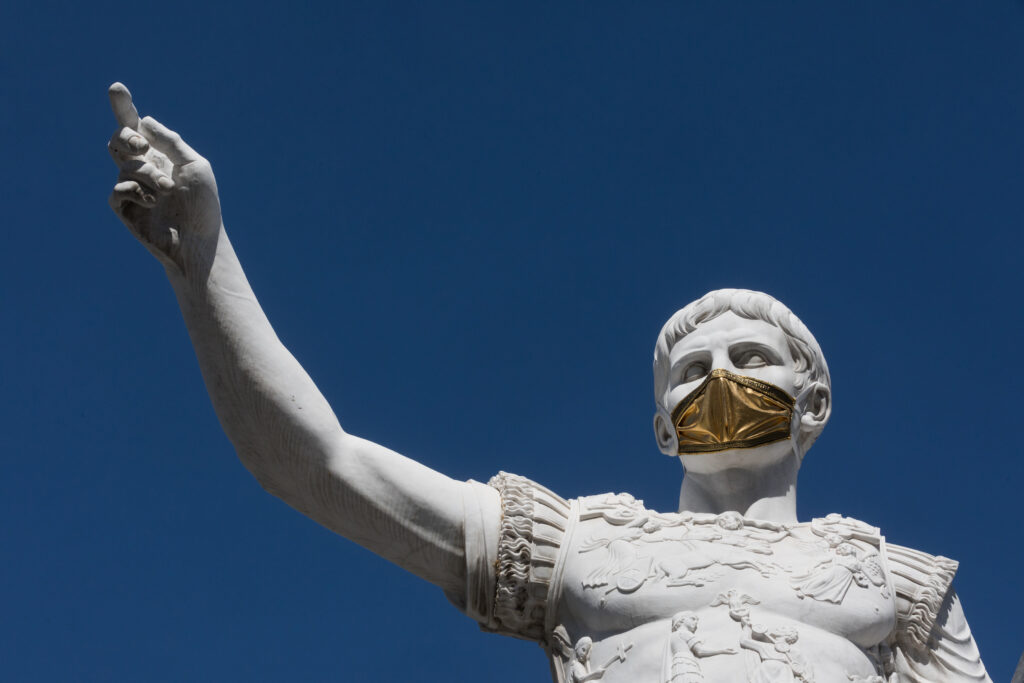Contact tracing, a public health tool challenged by coronavirus, faces new test in Nevada and its casinos
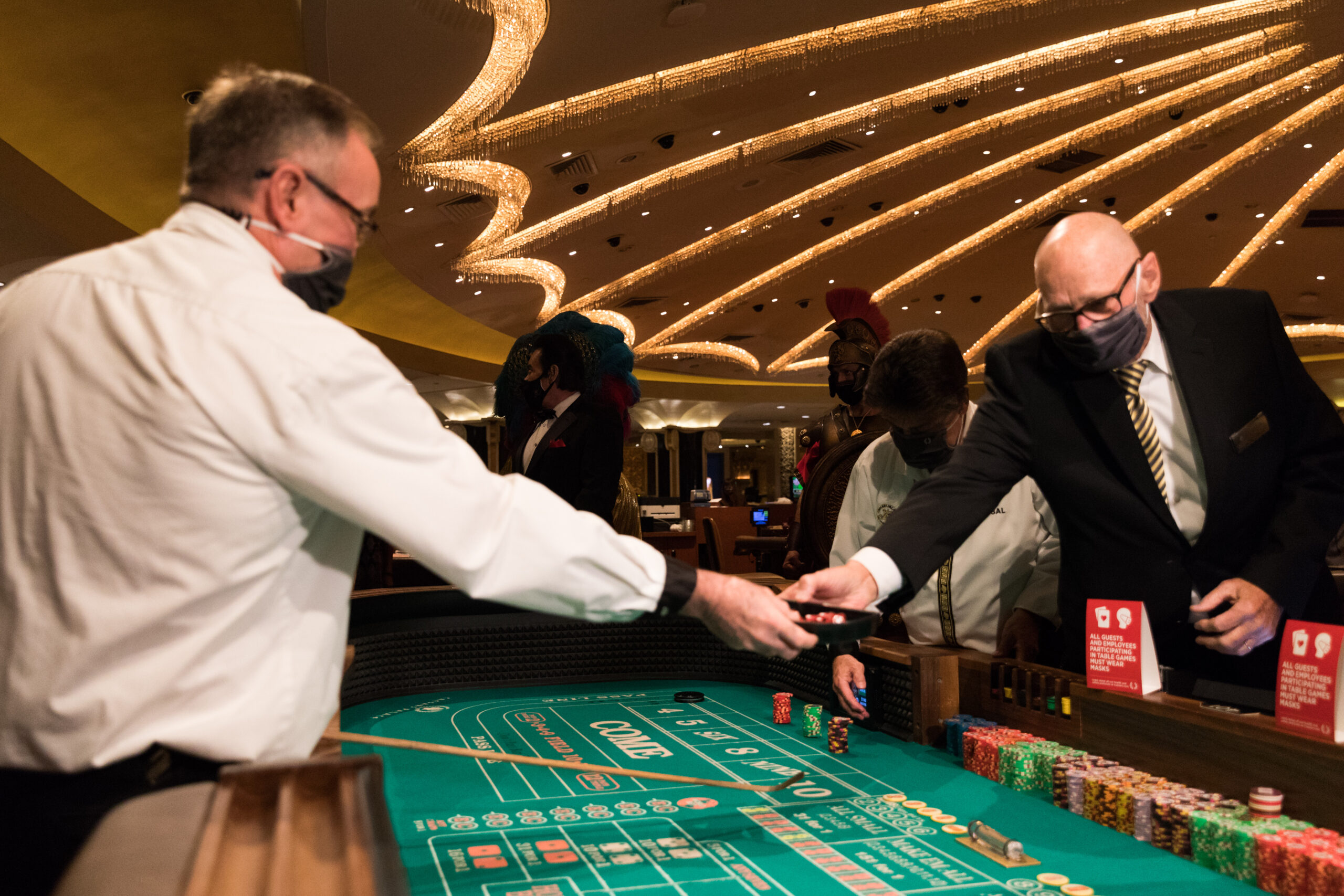
Long before contact tracing became the stuff of household conversations, it was a crucial but unassuming tool used by rank-and-file public health professionals to track down some of the most pernicious communicable diseases.
Contact tracing responsibilities within the Southern Nevada Health District were, for instance, divided into several groups. There was the group that investigated sexually transmitted diseases, including HIV. There was the tuberculosis group. Then, there was the everything else group: Salmonella, shigella and campylobacter, three types of bacteria, the most common among them.
For the most part, those diseases were fairly straightforward to trace. With those that were harder, like measles and pertussis, or whooping cough, which spread easily among people and require extensive contact tracing, there weren’t that many cases, and much of the population is immune because of vaccinations. Plus, at least there was a rule book for it.
Enter the novel coronavirus, a pathogen that spreads easily between people and which the entire human population had no immunity against before this year.
When done successfully, contact tracing is highly effective at limiting the spread of disease. At its simplest, it involves identifying all of the contacts of an infectious person, monitoring or testing them for the illness, treating the illness, and preventing them from spreading it to additional people. But for an illness that spreads as rapidly as COVID-19 does, that’s often easier said than done.
“Contact tracing is something we do for all communicable diseases, but what makes COVID different is we do it to a much further extent,” said Heather Kerwin, epidemiology program manager for the Washoe County Health District.
Contact tracing for COVID-19 requires people to recall every person they were within six feet of for at least 15 minutes while infectious. That means that contact tracing is only as good as someone’s memory — and their willingness to share highly personal information with a local health official they’ve never met on the other end of the phone.
“That’s part of the reason why coronavirus is such huge problem and a worldwide pandemic — because it’s very difficult to identify and isolate all of the contacts someone could’ve possibly had, and it relies heavily on people cooperating and complying with the quarantine orders and staying at home if they’ve been exposed,” said Devin Raman, senior disease investigator for the Southern Nevada Health District. “We try and explain why we do what we do and the importance of it, but it’s just difficult sometimes to get full cooperation.”
It’s even more of a challenge in a state that has built its economy on bringing more than 42 million people a year from far-flung corners of the globe to the same 4.2-mile strip of earth to spend a week, or a weekend, in close proximity with one another gambling and eating and sweating profusely elbow-to-elbow on packed sidewalks with their fellow travelers, a yard long drink in hand.
It’s because of those concerns that Nevada’s casinos were ordered to shutter their doors on March 18. But now casinos are once again open for business, and those challenges are presenting themselves anew.
Casinos are trying their hardest, leveraging their existing surveillance systems to help along with other technology and good old-fashioned sleuthing through interviews.
The reality is a little more complicated.
“It’s going to be impossible to identify all close contacts, especially if someone is here for a weekend of just gambling and wandering through the casino floor and playing on this machine and this table and over here,” Raman said. “There really is no way to track everyone who may have been exposed in a situation like that, unfortunately.”
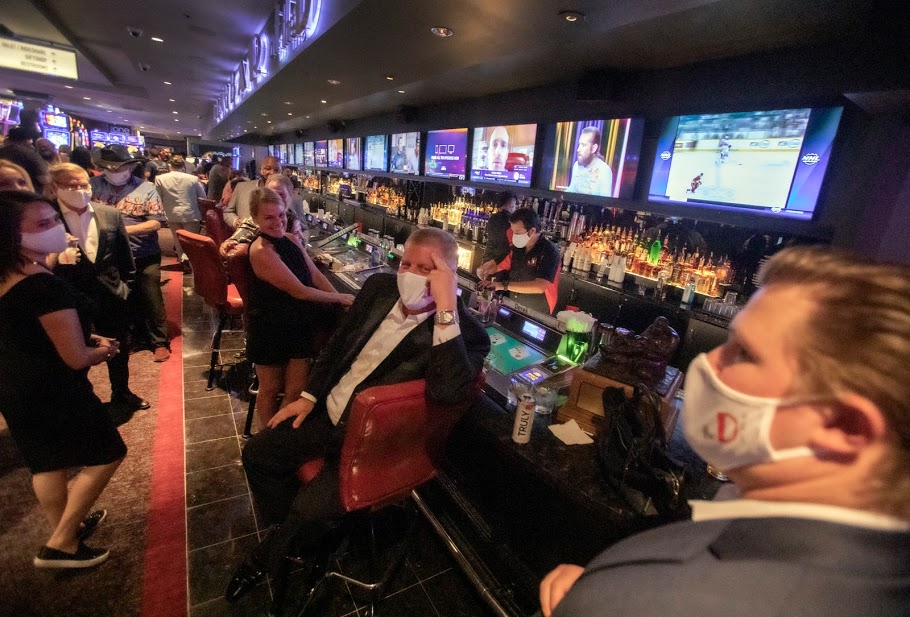
How contact tracing works
The typical contact tracing process begins when a lab reports a positive COVID-19 test result to the public health agency where the test was collected.
That means a test collected in Clark County will be reported to the Southern Nevada Health District, and a test collected in Washoe County will be reported to the Washoe County Health District. Carson City Health and Human Services was also doing contact tracing prior to the coronavirus pandemic, while the rest of the rural counties fell to the state Division of Public and Behavioral Health.
Since the beginning of the pandemic, several rural counties have taken over their own contact tracing responsibilities, including Churchill, Humboldt, Mineral and Nye counties. Elko County has also taken over its own contact tracing responsibilities, as well as those for nearby Lander and Eureka counties.
Reports of a positive case typically come in electronically, particularly from the big labs, including Quest Diagnostics, LabCorp and University Medical Center. But the state has had to adapt to account for new players that have entered the laboratory testing space during the pandemic, some of which don’t have the capacity to report electronically and instead send the results by fax.
“It’s a process in real time trying to establish that relationship and getting that reporting to flow easily,” said Julia Peek, deputy administrator of community health services for the Division of Public and Behavioral Health. “That’s been a unique challenge.”
Once the positive lab result comes in to the local health authority, the first step is to ensure that the lab is in the proper jurisdiction. For instance, if someone is tested through Renown in Reno but lives in Carson City, that lab result would be transferred from the Washoe County Health District to Carson City Health and Human Services. The first jurisdiction will typically perform an initial phone call to the individual to determine why the person came in for testing before transferring the result and the preliminary details of the investigation to the second jurisdiction.
Best-case scenario, the positive lab report has all of the details the health authority needs to contact the person, including a name, phone number and email. If it doesn’t, the health authority will have to call the ordering provider to track down that information.
From there, the positive cases fall to disease investigators, who are tasked with making contact with each person. The goal is to contact each positive case within 24 hours and to contact all of their contacts in the next 24 hours.
Raman said that the Southern Nevada Health District typically contacts positive cases within 24 to 72 hours of receiving their result, just because of the significant case volume the health district is still seeing. Clark County reported 971 new COVID-19 cases on Saturday alone, the greatest single-day increase in cases of the pandemic so far, though health officials attributed the increase to a lab reporting delay.
“Realistically, that is very difficult with the workload that we’re dealing with. Even me assigning out cases, I get days behind because there’s so many that come in, hundreds every day,” Raman said.
That’s why in Clark County the first contact a patient receives will typically be an automated text or email from the Southern Nevada Health District with a secure link where they can verify their identity and receive their positive lab result. That text or email goes out as soon as the positive lab result hits the health district’s system.
“That’s a really important piece of this,” Raman said. “This disease spreads pretty easily if someone doesn’t know that they’re infected.”
Most of the time, the disease investigator is able to make contact with the positive individual over the phone, but they each have their own protocols for what to do if the person doesn’t pick up. Kerwin said Washoe County investigators typically try calling several times and leaving voicemails, or they’ll send texts if the phone doesn’t ring. Next effort is email. Then a physical letter in the mail. And if all else fails, a disease investigator in rare cases will make a trip to the infected person’s home if there are extenuating circumstances warranting such a visit.
In Lander County, the county health officer continues to list one of their 32 cases as an “unknown location.” Peek said that the individual was tested in another state but gave a Nevada address; health officials were never able to find the person.
“It was a legitimate positive, we just couldn’t find them,” Peek said. “But it has to be counted in national data so it has to be listed in the county record.”
Once the disease investigator gets on the phone with the person, the first step is to notify them of their positive result. Sometimes people have already been informed by the lab where they were tested. Other times, the investigator is the first person telling them they have tested positive for COVID-19.
“As you can imagine, people have a very human reaction. Some people are like, ‘Yeah, of course I have it.’ Other people are thinking the worst and erupt into tears. Some people are absolutely in disbelief, most notably those who are asymptomatic. They question it. ‘Are you sure?’” Kerwin said. “You get the range of reactions, and you have to act in a human way to that.”
They might start off with a simple question: How are you feeling today?
“That’s what we do care about. Are you needing to seek emergency care? Have you let it go so far that you’re experiencing shortness of breath?” Kerwin said. “If some people are really defensive, or I have had some that have just been crying, I’ll give them space to do that. I’ll try to shift their focus to, so where do you think you got it?”
The first goal of the investigator is to establish when the person’s symptoms started, which is important for the contact tracing process because people are generally thought to be contagious starting 48 hours before they first show symptoms of the virus. But that can sometimes be hard to establish: Some people have seasonal allergies, while others might have a chronic cough.
Through that conversation, the investigator will sometimes find out that a person who previously thought they were an asymptomatic case actually did have symptoms they attributed to another cause, like an upset stomach or diarrhea. If the person appears to be truly asymptomatic, the investigator will try to determine the infectious period another way, or, at the least, go back 48 hours before the person was tested.
From there, the investigator will start making a list of the person’s close contacts — defined as someone who was within six feet of the person for 15 or more minutes — during their infectious period, including members of their household, friends and family, and coworkers. Investigators will often ask the person to take out their phone or planner to help them remember exactly what they did each day.
“We’re completely reliant on what the cases remember. We try to jog their memory,” Kerwin said. “What was the weather like? Was it that really windy Thursday or the day it rained?’”
They also try to nail down the specifics of those interactions: Were you at work? What did you do? Are people wearing masks? Do you share bathrooms or break rooms? Were you singing in a choir? Were you whispering? Were you talking close to someone? Were you even talking? Were you outside? If you were inside, were the windows open?
“You really want to figure out how infectious they may have been and how close those quarters were when you were sitting and communicating with somebody,” Kerwin said. “You do that for every single day once you nail that onset date.”
Investigators aren’t, however, particularly interested in tracking who may have used the register at the grocery store before someone who tested positive because surfaces aren’t thought to be a primary method of transmission. They’re also not tracking down who the person stood next to in line because of how difficult that information would be to obtain.
“Tracking down whose card went through the register right after this person’s card is not a great return on time investment,” Kerwin said. “All of our cases, for the most part, are essential workers who have been in and out of the house or they have engaged in behaviors that weren’t safe.”
During the conversation, the investigator will also try to walk the person back two weeks to figure out where they might have contracted the virus. Kerwin said that they’ve noticed that people report practicing social distancing during work, but then hang out with their friends in close proximity after work. She also said there have also been a lot of “very special lifetime” celebrations, such as graduation parties, baby showers, weddings, funerals and birthday parties.
“We have other instances where people have been like, ‘It was an outside party,’ but then did you go to the kitchen and have a 20-minute conversation inside or was someone in the bathroom blowing their nose?” Kerwin said. “Outside gatherings are much more safe than indoors, usually, but it’s kind of all over the place right now.”
Kerwin said that in many cases people have had more than one exposure, meaning it’s impossible to pinpoint when the transmission occurred.
“Unless we did genotyping of the virus, we can’t really say it was this person over that person,” she said.
On the call, the investigator will also give patients guidance about what to expect as far as the progression of their illness and check to make sure they have the resources they need to safely self-isolate at home for 14 days from when their symptoms started.
In general, health officials say people are cooperative on the calls, though there are some exceptions.
“I actually had to call someone who refused to give one of my investigators any information. We have people who don’t believe in it and then we say, ‘Why did you get tested for something you don’t believe in?’” Kerwin said.
After that call, the next step is to contact all of the person’s close contacts. A contact tracer will call each person on the list to inform them that they have been exposed to someone who tested positive, without identifying who that individual is, ask how they are feeling and tell them that they need to quarantine for 14 days since they were exposed and what that entails.
“Quarantine means you can’t run to the gas station and pick up a drink. Don’t go to McDonald’s for a burger,” Raman said. “You’re in quarantine, so you should stay home, as challenging as that can be.”
Health authorities often try to separate the roles of investigation and contact tracing to prevent the accidental disclosure of the positive case’s identity.
“Sometimes cases will go ahead and tell everybody through social media they got it,” Kerwin said. “Other people have trouble telling their own household members.”
Typically, the health authority will follow up with the contact on a regular basis to confirm they are at home quarantining and to monitor whether they start showing symptoms.
The hard part is that the number of close contacts of each case can vary wildly. Health officials say that during the stay-at-home order, the number of close contacts was somewhere between two and 10.
“Most people had less than 10 which was very manageable for us,” Raman said. “But now that people are starting to get back to work, particularly at the hotels and Strip properties, the contact lists can be 20 to 50 people.”
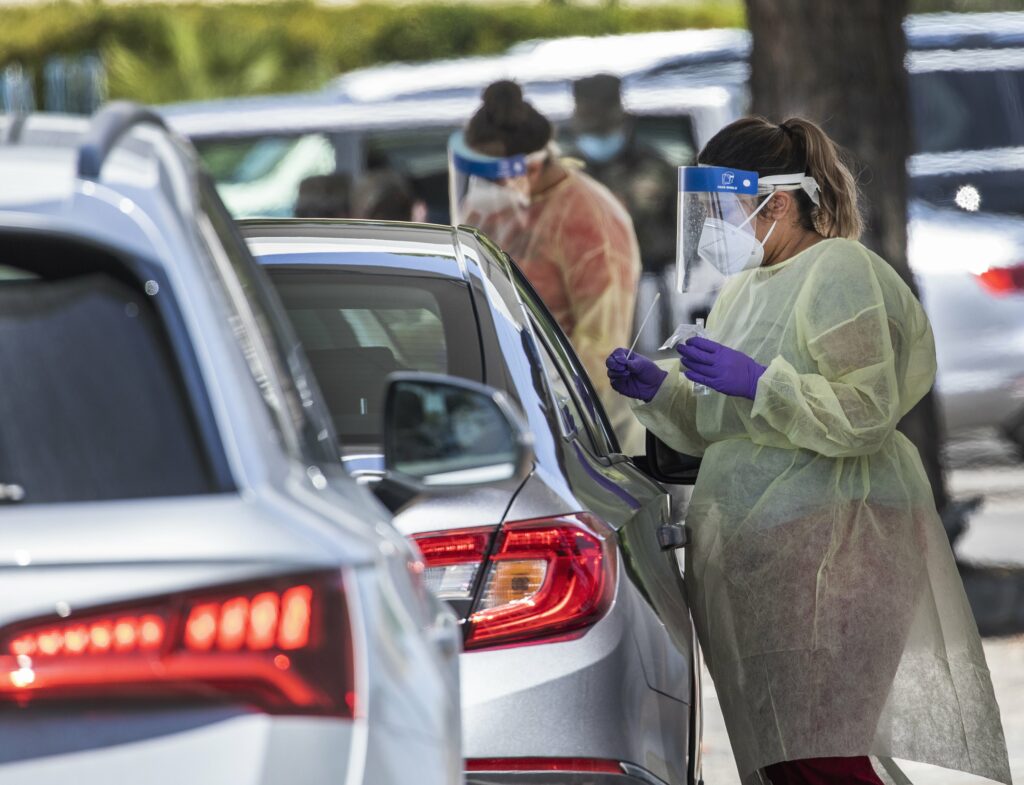
Tracking COVID inside casinos
The occurrence of COVID-19 infections among casino guests or employees was inevitable. It was only a matter of time.
Within two weeks of casinos reopening their doors, reports began trickling out about casino workers who had tested positive for the upper-respiratory virus. The Mayfair Supper Club at Bellagio, for instance, temporarily shut its doors after a kitchen worker tested positive. Across the street, at the Flamingo, two employees also received positive test results. Workers at other hotel-casino properties have tested positive since then, according to The Las Vegas Review-Journal, which has reported on cases at Sahara Las Vegas, The Cosmopolitan and The Linq.
And on Saturday, the Review-Journal reported that a Caesars Entertainment employee died after testing positive for COVID-19.
The smattering of cases highlights the unpredictability of the virus, which has struck nursing home patients, health care workers, grocery store employees, partygoers, churchgoers, construction workers, tourists, casino employees and everyone in between. And as gaming industry officials are quick to point out — just because a worker or guest tests positive, it doesn’t mean he or she contracted it at that specific property.
Still, a positive test jumpstarts contact tracing efforts within casino properties, which are like small cities containing a gaming floor, restaurants, pools, hotel rooms and more. The gaming industry, however, has an advantage over other businesses given the robust surveillance systems that exist on the premises.
In the event an employee or guest at a Caesars Entertainment property tests positive, surveillance investigators will trace his or her movements through the hotel and casino, identifying anyone who may have been within 6 feet of that person for 10 minutes or longer, said Richard Broome, the company’s executive vice president of communications and government relations. Employees who meet that criteria will be told to stay home for two weeks on paid leave, he said, and can return upon providing certification of a negative COVID-19 test.
Broome acknowledged it can be more challenging to identify guests in the same manner because not everyone is staying at the hotel; some are simply passing through on their way to meet friends or visit the neighboring property.
If Caesars can identify guests who had that level of contact with someone who tested positive, the company will inform them and ask them to get tested, he said. The surveillance team can sometimes determine guests’ identity based on a loyalty card they used while gambling or by tracing their steps back all the way back to the check-in desk.
“So far, it has not proven to be a burden because the number of situations generally is very small,” Broome said of the surveillance-aided contact tracing. “We’ll obviously have to monitor this as it goes.”
Contact tracing involving guests, though, has its limits: The company can’t force a guest to get a COVID-19 test.
Even so, Broome said the company is “very acutely” tracking its contact tracing efforts, especially among employees, to see who ends up contracting the virus. While it’s too soon to draw any conclusions, the information could be helpful in evaluating the company’s overall strategy to prevent the spread of the virus.
“It would be some indication of the effectiveness of your social distancing and cleaning and sanitation work,” he said.
The Las Vegas Sands, meanwhile, is piloting wearable technology to assist in that mission. One thousand volunteer employees soon will start wearing rings made by a company called Oura, said Zac Hudson, the gaming company’s general counsel. Studies indicate the smart rings may be able to predict the onset of COVID-19 symptoms by tracking aberrations in body temperature over time. While the rings collect a plethora of health data, the Las Vegas Sands will only have access to one piece of information called a risk score, which predicts the likelihood of a person coming down with the upper-respiratory virus.
“We want to try to find 21st century solutions to a 21st century problem to the extent they make sense,” Hudson said, explaining the company’s willingness to test and invest in new technology.
The Las Vegas Sands is also trialing a Bluetooth-connected device that will be attached to 1,000 workers’ badges, enabling the company to track their on-property movements for the purposes of contact tracing, Hudson said. The device is similar to ones people attach to their keys or wallet to help locate them if they go missing.
The goal isn’t to determine, say, whether an employee picked up fast food on the way home or stopped at the grocery store. The technology won’t be tracking employees’ movements off property. But Sands officials envision it as another tool, combined with their surveillance systems and human-conducted interviewing, that will make contact tracing easier and more accurate.
It’s all part of the company’s broader efforts to protect the health and safety of employees and guests through a multi-pronged strategy. If the Oura rings and Bluetooth-connected tracking devices prove helpful, Hudson said the Las Vegas Sands — which is not disclosing whether any employees have tested positive for the virus — plans to deploy them to all 10,000 employees.
“It’s taking a village to make this work,” Hudson said, describing the company-wide effort that’s needed to adapt amid the pandemic.
But the ability of each casino to contact trace within the property can vary greatly. That, in turn, limits the ability of health district officials to conduct their contact tracing investigations.
“I think each property is providing the best information that they can depending on their technology and the sophistication of whatever machines and processes they have on their properties,” Raman, with the Southern Nevada Health District, said. “They’re trying to be as helpful as they can with what they have.”
Additionally, disease investigators in Nevada have to rely heavily on cooperation with other states. If a visitor tests positive in Clark County, the Southern Nevada Health District will initiate an investigation of the person’s contacts while they were in town, while the rest of the investigation gets passed off to their local health district at home.
“We try to identify any local contacts, whether they were here visiting family or whether they were on the Strip, where they were staying and what hotel they were at,” Raman said. “We’ve set up a good communication line with all of the major hotel properties so if we identify a guest of theirs who is a case we have contact names and phone numbers of exactly who we need to speak with to alert them of that person so they can start gathering information on their exposed employees, make sure the room is taken out of service and cleaned appropriately.”
But if a visitor tests positive once they get home, the Southern Nevada Health District has to rely on the visitor’s home health district to reach out to notify them that the person recently traveled to Las Vegas. It’s the same process that happens when a Nevadan tests positive out of state.
“Some states are better than others, so we get things pretty quickly and then other states we’ll get something from April,” Raman said. “If something is two months old, there is nothing we can do with that.”
The reality of the situation, though, is that there is no way to identify every single person someone who tests positive might have come in contact with. That’s why health district officials say that preventative measures that casinos have taken, such as putting up plexiglass barriers, mandating masks and enforcing social distancing protocols are so important.
“That’s really the best way to tackle the problem, by putting those prevention measures up front, rather than relying on contact tracing in the end. In a public space like that, there’s no way to identify everyone who may have been exposed,” Raman said. “Someone who’s playing the casino floor, those types of contacts, I don’t know that we’ll ever be able to identify those.”
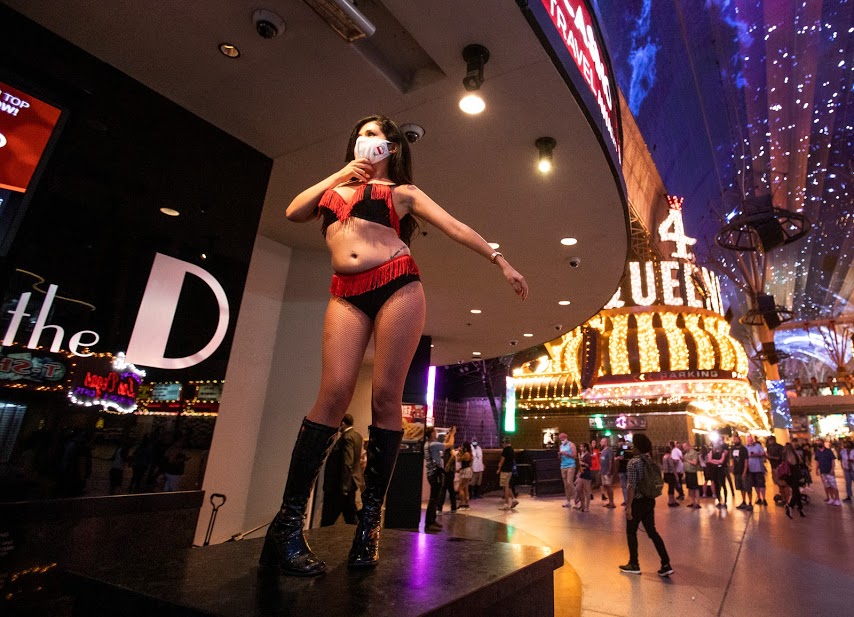
Fine tuning the contact tracing process
Health officials knew that, as Nevada started reopening businesses, the number of positive cases would go up. They also knew the limited number of contact tracers employed by the state would not be able to handle that case volume. Between the Division of Public and Behavioral Health, the Southern Nevada Health District, the Washoe County Health District and Carson City Health and Human Services, the state will have about 100 paid contact tracers through July and 150 starting in August, according to the state's Disease Outbreak Management Plan.
That’s why the state contracted with Deloitte, the professional services firm, to provide 250 additional paid contact tracers. Ninety-six percent of those are Nevadans, and 24 percent speak both English and Spanish. The state is also planning to bring on additional contact tracers through the Nevada System of Higher Education.
The Southern Nevada Health District is already working with Deloitte on its contact tracing investigations. Now, health district officials conduct the initial disease investigation with the person who tested positive and compile the list of close contacts, but the responsibility of calling each of those close contacts now falls to the Deloitte contact tracers.
“It’s pretty new to us, and we’re just trying to smooth out the kinks,” Raman said. “But we’re hoping that it will help alleviate a large part of the burden on our investigators so we can move toward that goal of contacting every case within 24 hours. We were responsible for cases and contacts, so that was part of the reason why we have these delays, so hopefully this will help a lot.”
The Washoe County Health District is also planning to transition to using Deloitte for calling all close contacts in the near future while keeping all of the disease investigation responsibilities in-house.
“Contact tracing is a five to 10 minute phone call and checking in with them through their 14 days where the investigation is a dynamic and nuanced and long process,” Kerwin said. “If there’s an outbreak happening, we want to circle up and use our own internal resources to say, ‘Oh, hey, we noticed an outbreak associated with this church,’ and we want to be able to readily communicate that.”
The state also contracted with Salesforce to automate some parts of the contact tracing process, including quickly calculating how long someone needs to quarantine based on the date they were exposed and generating scripts for those contact tracing conversations. The Salesforce platform will also be used to enhance the kind of information that the state can collect during the disease investigation process, such as whether the person who tested positive recently attended a mass event and whether they were recently at a gaming facility.
“That’s a huge win for us,” Peek said. “We can get much more granular data so we can see if there is something we need to be aware of.”
Nevada is also looking into using an opt-in contact tracing app, which Peek said would be of “unique value” in Nevada as a tourist destination. State officials met with Google and Apple last week to discuss the security and confidentiality of the application programming interface, or API, the companies jointly developed that will allow phones to anonymously exchange information with one another when they are in close contact through Bluetooth.
“We’re assessing this with our attorney general’s office, trying to absorb all of this and figure out within the guidance what our AG is comfortable with,” Peek said.
Peek envisions some sort of protection being put in place so that someone can’t tell the app that they have tested positive and to notify all of their close contacts unless they have in fact tested positive. Local health districts, for instance, could be responsible for handing out a validation code to the person who tested positive to be entered into the app.
In the meantime, health officials are trying to do the best they can with the resources, technology and information they have and to adapt quickly when any of those circumstances changes.
“In public health we’re just trying to do the best work we can given the knowledge the scientific community has,” Kerwin said. “We’re asking people to be patient with us. We may find out in two years we did it all wrong, putting the whole house on quarantine wasn’t necessary. But we’re trying to make sure people are as safe as possible now.”
